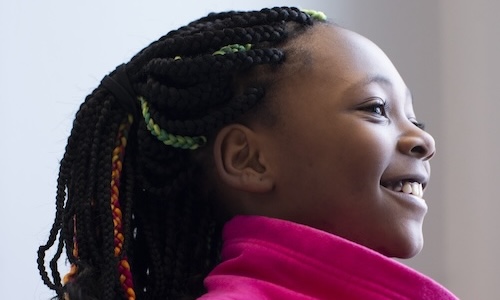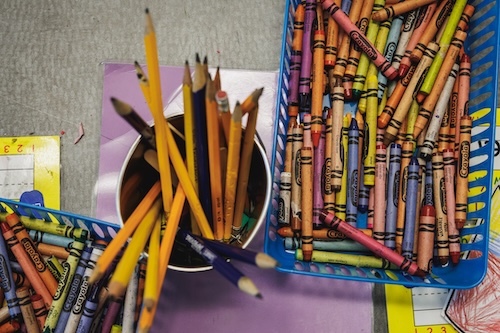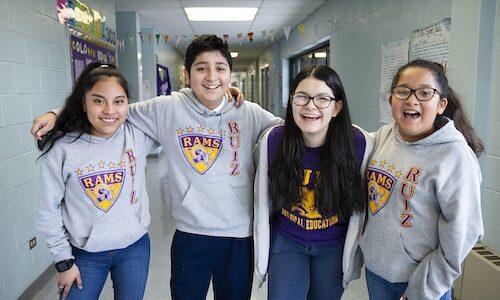
It was great to see such a strong turnout for our recent NWEA Policy and Advocacy Twitter chat on summer learning. We loved hearing what this group of engaged and informed educators and experts had to say about how districts can expand and improve summer learning opportunities in the coming months.
The #SummerLearningChat coincided with the release of new NWEA research showing some groups of students are harder hit by summer learning loss than others. The research found that while students with disabilities, rural students, and English learners can make gains at rates equal to or faster than their peers during the academic year, they experience greater learning loss when they’re out of school in the summer. That leads to persistent opportunity gaps and diminishing school-year gains over time.
Given that finding and what we know about the negative effect of the pandemic on student achievement—particularly for historically marginalized groups—we asked our Twitter community to share news from the field about summer learning programs. Here are the four themes that emerged.
1. We must prioritize students with the highest needs
Those joining the Twitter conversation agreed that summer learning programs haven’t been given enough attention to date.
They also agreed that districts must prioritize historically underserved students and those whose learning was most affected by the educational disruptions associated with the pandemic. There was broad consensus among participants that historically underserved students face challenges when it comes to accessing summer learning programs.
“Historically underserved students can face additional obstacles to accessing summer learning, including access to transportation, food, and out-of-pocket expenses,” tweeted our friends at the nonprofit Collaborative for Student Success.
[D]istricts must prioritize historically underserved students and those whose learning was most affected by the educational disruptions associated with the pandemic.
The team at Future-Ed at Georgetown University shared that an analysis they conducted found transportation to be a particularly big problem in rural districts and that rural districts have been less likely to spend federal pandemic relief funding on summer learning efforts than urban and suburban districts. Future-Ed joined others in saying leaders and policymakers should cover costs related to transportation and food.
Many chat participants said students with disabilities need greater access to summer initiatives due to the impact of school closures on their progress and the degree to which they are negatively impacted by summer learning loss.
2. The role of data in determining eligibility cannot be overstated
Everyone agreed that districts should come up with systematic ways to determine who is eligible for summer programs and which interventions they should receive.
“Data is key. Districts should use assessment and academic data to determine which students are most in need of summer learning support,” tweeted the team at the research organization the Center on Reinventing Public Education (CRPE).
Added All4Ed, “Districts and schools should examine learning and other data from the 2021–22 school year to pinpoint the needs of their student populations and deploy programs to target those needs.”
Dale Chu, a senior visiting fellow at the Fordham Institute, noted that the spring assessments now underway could be important in helping us understand and address pandemic-related recovery efforts.
3. Districts must share summer learning plans
We got some good news from CRPE during the online conversation. They reported more districts have shared their summer learning plans with families this year as compared to last year.
However, there are still many districts that haven’t taken those steps, and summer is fast approaching. In an analysis of 100 districts, CRPE found that 63 districts had shared summer learning options with families, up from 47 in the spring of last year. However, more than a third of the districts in the CRPE analysis still haven’t done that.
Future-Ed told us they looked at COVID-relief spending plans in 4,000 districts and found summer learning opportunities to be the top priority for spending on academic recovery.
[L]eaders and policymakers should cover costs related to transportation and food.
There is hope we’ll see more support for summer programs from states. Alaska, Delaware, Hawaii, Minnesota, and Texas are among the states that have spent Elementary and Secondary School Emergency Relief Funds (ESSER) on summer programming, according to Education Commission of the States research. But advocates say every state needs to get in on that effort now.
ESSER requires states to spend at least five percent of the funding they receive for evidence-based interventions for disrupted learning, including for out-of-school experiences, which may include summer programs. States do have to spend at least one percent of the funds they receive on evidence-based summer programs.
4. Strong programs share several characteristics
Summer learning programs should be long enough—at least five weeks—to be effective, and student groups should be on the smaller side of about 15 or fewer students, tweeted the team at Future-Ed. They, like others, noted that districts need to take steps to ensure attendance is high in summer programs. A RAND Corporation study found students with high attendance in summer programs get much more out of the programs than their peers who attend less frequently.
CRPE Resident Policy Fellow Christine Pitts shared great advice for ensuring summer learning programs are effective. Key strategies include:
- Linking summer learning plans to a district’s long-term goals
- Including opportunities for enrichment, play, and peer-to-peer connections
- Putting family communications and engagement plans in place
- Supporting student attendance
- Tapping community partners
- Creating new recruitment pathways
- Paying teachers adequately for summer work
- Ensuring students have access to critical social services
You can read more about these strategies in “A roadmap to kick-start recovery in 2021: Six principles for summer learning and beyond,” a paper Christine co-wrote with her colleagues.
Paolo DeMaria, president and CEO of the National Association of State Boards of Education (NASBE), said getting community partners involved, like libraries and recreational centers, is critical. For example, Georgia is leveraging $27 million of its federal relief funds to partner with the Georgia Statewide Afterschool Network to provide local grants to expand access to and improve the quality of after-school and summer programs.
During the Twitter chat, Paolo emphasized the importance of making summer programs interesting to kids. “Let’s make sure learning is fun and engaging. If students are turned off or bored, we won’t have the impact we want,” he tweeted.
Paolo added that given the effect of the pandemic on student learning, and the degree to which that has exacerbated inequities, now is the time to get serious about summer learning programs. “The concept of ‘summer slide’ has been known for a long time. In these disrupted times, the impact is even more significant. Schools and districts have often had summer learning opportunities, and now is the time to take those to the next level,” he said.
Stay connected
If you missed the Twitter chat, you can check out the transcript of the conversation.
Have ideas for our next Twitter chat? Let us know by tagging @NWEAPolicy. And please let us know what you’re hearing about school and district recovery efforts, including news related to summer learning programs. We’d love to hear from you!







